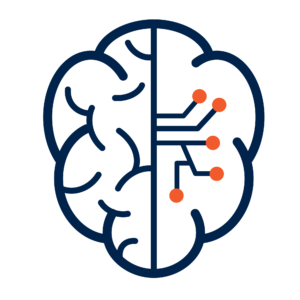R&D Projects
Distributed Fiber-Optic Sensing Research
Distributed Fiber-Optic Sensing (DFOS) technology enables continuous, real-time measurements along the entire length of a fiber optic cable that can be deployed along entire wellbore. This growing technology provides a reliable, cost-effective solution for many borehole geophysics/petroleum engineer applications. DFOS technology includes Distributed Acoustic Sensing (DAS), Distributed Temperature Sensing (DTS), and Distributed Strain Sensing (DSS). At RCP, we are working to improve the acquisition, processing, interpretation, and modeling of all types of DFOS data. The current active research topics include:
-
-
- Time-lapse VSP
- Microseismic-based imaging and inversion
- DAS tube-wave analysis
- DFOS-based flow monitoring
- Low-frequency DAS cross-well strain interpretation and inversion
- DTS warmback modeling/inversion
-
Click the links below for more information
Inter-stage Time-lapse VSP
Reservoir elastic property changes induced by hydraulic fractures can be monitored by time-lapse DAS VSP immediately acquired at each stage. Using field data acquired in Midland Basin, we performed quantitative analysis on the time shift measurements and P-S scatter waves. We developed processing workflows to estimate fracture height and fracture closure time for each individual stage. Cross-well fracture responses are also analyzed to constraint fracture properties away from injectors.

DAS Microseismic Analysis
Due to dense spatial resolution and large aperture, DAS provides great opportunities to extract more information from microseismic waveforms, and provides further constraint on reservoir and hydraulic fracture properties.
We use microseismic-induced guided waves to characterize unconventional reservoirs. Guided waves are seismic waves that are trapped by low-velocity layers. They are dispersive and behave similarly to surface waves. We successfully use guided-wave waveforms to estimate Eagle Ford reservoir thickness and shear velocity with high accuracy. The guided-wave energy can also be used to constrain microseismic event depth. The developed algorithms can significantly increase the value of DAS-based microseismic acquisition.

We also observed near-field energy of microseismic events in the DAS data. Near-field term is represented as a low-frequency signal between P and S waves. It is highly sensitive to the moment tensor orientation and to the low-frequency component of the source time function. We are investigating its potential for moment tensor inversion and source function estimation.

DAS tube-wave analysis
Perforation shots induce high-energy tube waves in the borehole during completion. Strong decay of the tube-wave energy can be observed in the stimulated wellbore sections, in strong contrast to the not-yet stimulated sections. The tube wave spatial decay rate is a strong indicator of near-wellbore connectivity and hydraulic properties.

Flow monitoring
DAS and DTS can capture the vibration and temperature signatures induced by borehole fluid, which leads to applications including production logging, gas lift monitoring, and pipeline monitoring. Working with FAST consortium and Dr. Yilin Fan’s research group, we constructed several flowloop experiment sites to investigate DAS and DTS responses under different phase combinations, flow regimes, and pipe (borehole) inclinations. The project goal is to estimate flow rate and phase volumetric frictions from DFOS data. We are currently constructing a 200-m horizontal flowloop at the Colorado School of Mines Edgar Mine research facility. The flowloop includes a 40-meter borehole section, which provides an ideal testing environment with stable temperature and low environment noise.

Machine Learning and Data Analytics in Unconventionals
Over the past decade, the volume and variety of data collected in conventional and unconventional fields has increased tremendously. Although this growth has enabled better insight, processing and analyzing these datasets has become more complex and time consuming. This problem is not unique to oil and gas, which is why technologies related to data analytics, machine learning, and automation have risen in demand over recent years across almost all industries. To increase both the quality and speed of data processing/analysis for geologists, geophysicists, and petroleum engineers, RCP is working to develop new, enhanced workflows that leverage the capabilities of machine learning.
The Chalk Bluff project is currently benefiting from RCP’s machine learning research. A primary goal of this project is to use the large amount of available data (fiber optics, seismic, geochemistry, and more) to identify the optimal development strategies for the field. One approach that RCP is using to accomplish this goal is a new machine learning based multivariate analysis workflow. Since machine learning algorithms make predictions using correlations (linear and nonlinear) in the data, we can infer which variables are most correlated with a given target by finding the combination of variables that produces the most accurate prediction. Additionally, we can compare the accuracy of the prediction with a randomized (or “shuffled”) version of the target to ascertain the likelihood that the correlations are not simply random. By employing this method, the most statistically significant variables can be quickly identified, streamlining analysis and interpretation of high-dimensional datasets. In the Chalk Bluff field, this method is being used to find the geologic and engineering variables most correlated with higher production as well as better frac effectiveness.
RCP is working with the Chalk Bluff, Eagle Ford and Wattenburg project data to generate new statistical analysis workflows. We are also working on the application of new machine learning technologies like Deep Learning to solve a wide range of exploration and development problems. The near future focus is on four specific problems:
- Machine learning based geostatistical estimation and simulation
- Automation of microseismic processing workflows through Deep Learning
- Land seismic noise reduction via Dictionary Learning
- Sweet spot identification using pressure and flow data in conjunction with seismic and well data
Compressive Sensing
Compressive Sensing (CS) is a signal processing technique that simultaneously records and compresses the signal. In seismic exploration, fewer receivers and sources are used in the field than required by a conventional survey. Omitted traces will be reconstructed during the data processing step. The sources and receivers should be placed on a specifically tailored sampling scheme to secure proper reconstruction. With RCP and the Electrical Engineering Department at Mines, we developed a new novel sampling approach called Two-Stage Sampling which is more robust compared to industry utilized Jittered sampling as shown in the figure. To advance CS seismic applications further, RCP is working with synthetic seismic data from the SEAM Barrett model, TGS Powder River Basin seismic data, and Dawson Midland Basin multi-component seismic data to study reconstruction and deblending.
This project is a collaborative project with the CSM Electrical Engineering Department (Prof. Michael B. Wakin).

Robustness of Two-Stage scheme vs. industry practice Jittered scheme. Mutual coherence is stable as random perturbations to the schemes are introduced.
PRE-STACK WAVEFORM INVERSION
Currently, we are researching 9C 3D seismic data inversion as applied to our Midland Basin dataset. Linearized AVA inversion inverts for the relative changes in P-impedance, S-impedance, and density and uses the low-frequency background model (obtained from well logs) to estimate the absolute values of these parameters. The focus of this research phase is to develop the pre-stack waveform inversion that addresses the limitations of the linearized AVA inversion. Using the reflectivity method as its forward operator, the pre-stack waveform inversion can model the frequency-dependent AVO responses as well as the converted waves and interbed multiples caused by the layering of the reservoir zone, which is not accounted for in the linearized AVA inversion. The pre-stack waveform inversion can also update the low-frequency background model and potentially obtain more accurate absolute values of P-impedance, S-impedance, and density in the presence of large impedance contrast. The pre-stack waveform inversion will be applied to the nine-component (9C) and three-dimensional (3D) seismic data inversion from the Midland Basin. Available data for this project includes well logs and 9C3D surface seismic data acquired in Midland County, Texas, which will be processed by RCP. The final goal is to examine the added values of pre-stack waveform inversion and the multicomponent seismic data for rock property estimation.
Inline stacks of P-wave data showing field data (provided by Dawson Geophysical). The dotted box indicates the reservoir zone, which includes both Spraberry and Wolfcamp formations. The blue arrows indicate the vertical boundary between Spraberry (upper) and Wolfcamp (lower) formations in the stack.
Enhanced Oil Recovery in unconventional reservoirs
EOR mechanisms in unconventional resources is a research area due to low permeability and micro and macro fractures created by hydraulic fracturing. We have studied gas re-injection EOR using a calibrated history matched simulation model and found 13% additional production by turning three producers to injectors. We are now studying CO2 injection. For this we are using both lab flow experiments on core samples and using our calibrated history matched reservoir simulation model to understand the mechanism and to maximize oil that can be recovered by CO2 injection. Once the mechanism is understood, CO2-EOR can be used as a critical step to increase economic gain before sequestration.
carbon capture utilization and storage for the energy industry
Carbon Capture, Utilization, and Storage, or CCUS, is a key technology for tackling climate change and continued operations of the oil and gas industry. The ambition of net-zero emissions by 2050 is practically impossible to be achieved without CCUS. CCUS technology is to separate CO2 from a gas stream, compress it to dense-phase form, transport it via pipeline and inject it into geological formations, including oil and gas fields, deep saline aquifers, or coal beds. There are now 26 commercial CCUS facilities in operation globally. Funded by DOE, our goal is to initialize large-scale and commercial CCUS projects in Colorado. At this time, we have identified the 10 largest CO2 sources in Colorado and potential storage locations. We are in discussions with several of these operators to conduct a front-end design and economics study on sequestration and EOR options. This is a very new and exciting project, potentially a new industry, and a source of revenues.
Economics study showing representative values that CO2 EOR can generate up to $10/ton of CO2 profit from coal plants accounting for tax credits and revenues (left). Top 10 CO2 emission sources and sinks in Colorado. CO2 can be captured from the sources and then stored in the nearby basins via short pipeline (right).








